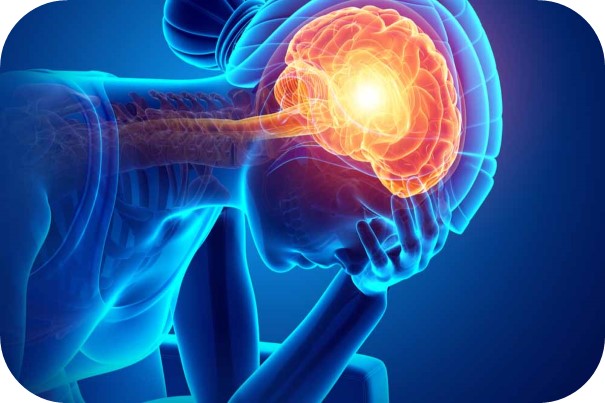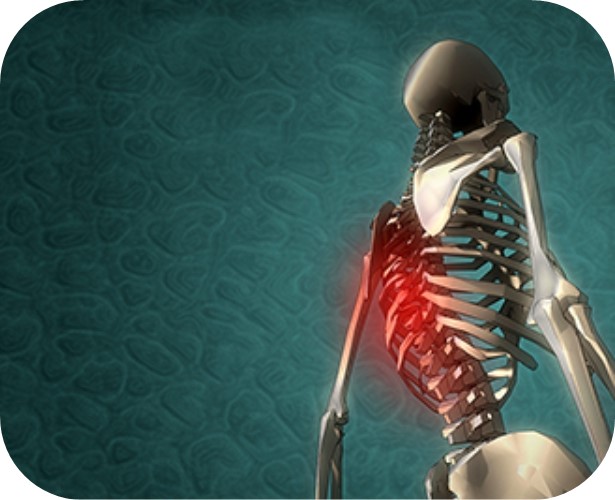

Cancer is a health problem that has caused great distress and suffering since the existence of human beings, often accompanied by a sense of helplessness and psychological depression. In this disease, in which early diagnosis and treatment are of great importance, pain is sometimes the first reason for the patient to apply to the doctor, but often it is a problem that he has to cope with during the course of the disease, which can reach dimensions that can hinder its treatment and vital activities. Multidisciplinary approach, which is one of the most important elements of pain treatment; that is, the collaboration of physicians from various branches of medicine is also critical in cancer treatment (algology, oncology, surgery, radiology, psychiatry, psychology, family medicine). In this way, while the treatment for the improvement of the disease continues, it is possible to increase the quality of life of the patient.
Pain in various types of cancer is due to different causes. This depends on the type of cancer, its stage, and the patient's pain threshold. The severity of pain associated with cancer usually ranges from moderate to severe. Each patient's pain is unique. For this reason, a special treatment scheme should be created for each patient.

Pain in cancer is due to three main causes:
Tumor-related causes (77%)
Methods applied during cancer treatment such as surgery, chemotherapy, radiotherapy (19%)
Non-cancer causes (4%)
Pain in cancer may develop due to:
Circulatory disorder due to blockage of blood vessels
Bone fractures due to metastases
Infection
Inflammation
Tumor pressing on nerves
Obstruction of hollow organs (eg intestines) or various ducts (eg bile ducts)
Pain frequency in cancer
Studies have shown that 90% of patients with advanced cancer and 30% of all cancer patients, regardless of stage, complain of pain. 50% of patients suffering from cancer pain cannot receive adequate pain treatment.
The most common pain caused by cancer is bone metastasis pain. Up to 60-80% of cancer patients with bone metastases experience pain. The second most common cancer pain is pain caused by tumors pressing on nerves or internal organs. Tumors adjacent to nerve tissues are usually the ones that cause the most pain. The third most common cancer-related pain is pain associated with chemotherapy, radiotherapy, or surgery.
Cancer pain can occur in different parts of the body. In one study, more than 80% of patients had pain in two different areas and more than 30% had pain in three different areas.
Chronic pain is a condition that needs to be effectively treated by physicians. This type of pain affects a person's life in various ways. It changes an individual's personality, abilities and quality of life.
Chronic pain is of two types: continuous and breakthrough pain. Breakthrough pain is a short-term exacerbation of severe pain that occurs despite the patient taking pain medication regularly. It usually starts suddenly and lasts from a few minutes to a few hours. Many patients experience multiple episodes of breakthrough pain during the day.
Breakthrough pain may be caused by cancer or cancer treatment, or it may occur during a certain activity (such as walking, dressing, coughing). However, it can sometimes occur unexpectedly for no apparent reason. Breakthrough pain is usually treated with strong, short-acting pain relievers that work more quickly than regular pain medications.
 Pain Classification in Cancer Patients
Pain Classification in Cancer Patients
Acute cancer pain: It occurs as a result of cancer cells multiplying rapidly and invading healthy tissues. It can be observed both at the beginning of the disease and in the advanced stages. Especially in breast, prostate, ovarian and rectum cancers, pain is an early sign.
In advanced stages of cancer; For example, acute pain may occur as a result of fractures of the spine and hips as a result of the tumor destroying the bone, or from obstruction of the intestine by the tumor.
Acute pain may also be observed due to cancer treatment (eg surgery, radiation therapy, chemotherapy).
Chronic cancer pain: Mechanisms that cause pain include obstruction of lymphatic (fluid) pathways and vessels, tissue destruction (swelling and inflammatory reactions in healthy tissues). Chronic pain is observed in 75% of patients. Types of chronic pain include:
Pain due to invasion of bone tissues: The most common cause of chronic pain is the invasion of bones by cancer cells. It is usually observed in breast, prostate, thyroid, lung and kidney tumors. The pain is constant and increases at night and with movement. Patients complain of blunt, aching or deep, stabbing, stinging type of pain. Depending on the muscle contraction, pain in the form of contraction, withdrawal and cramping may also occur. Bone scintigraphy is very valuable in early diagnosis.
Pain due to invasion of nerves and spinal cord: This type of pain, which is caused by the invasion of nerve tissues by cancerous cells, is very difficult to treat. The pain is continuous burning or intermittent stabbing. Symptoms such as numbness, tingling and loss of muscle strength occur in the relevant area.
As a result of the invasion of the spinal cord, complaints such as weakness in the arms and legs, paralysis, urinary or stool incontinence can be observed.
Pain due to the invasion of the paths inside the hollow or hard organs with cancerous cells: Very severe pain occurs as a result of the obstruction of the hollow organs such as the stomach and intestines or the bile ducts in the liver with cancerous cells.